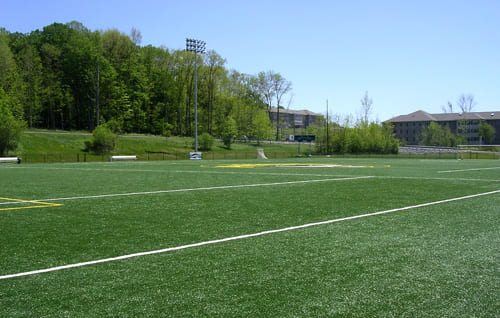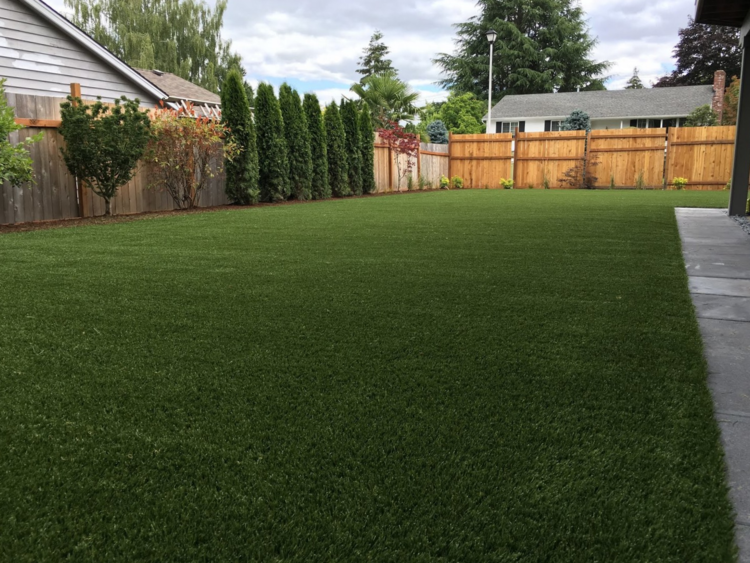Upgrade Your Outdoor Space with Arizona Artificial Turf for a Vibrant Green Look
Upgrade Your Outdoor Space with Arizona Artificial Turf for a Vibrant Green Look
Blog Article
Look Into the Environmental Perks of Opting for Artificial Lawn Solutions
The fostering of synthetic grass solutions presents an engaging possibility to address pressing ecological obstacles. By considerably reducing water usage and decreasing the application of dangerous chemicals, these alternatives not only advertise lasting landscaping however additionally protect regional ecosystems.
Water Conservation Conveniences
One of the most considerable advantages of man-made lawn is its capacity to preserve water. Traditional grass lawns require considerable irrigation, especially in areas vulnerable to dry spell or water limitations. In contrast, synthetic grass does not need watering, significantly decreasing the general need for water resources. This feature is particularly valuable in dry areas where water shortage is a pushing issue.
By getting rid of the demand for regular watering, synthetic grass contributes to lasting landscape techniques and assists alleviate the environmental influence of excessive water usage. The preservation of water extends to the reduction of drainage, which can lead to dirt disintegration and waterway contamination.
Additionally, the installment of fabricated lawn permits communities and house owners to allot water resources extra successfully, concentrating on important uses such as alcohol consumption water and farming. The shift in the direction of synthetic grass not only advertises liable water use but also aligns with wider ecological goals focused on maintaining natural deposits.
As areas progressively focus on sustainability, the water conservation benefits of synthetic grass present a compelling case for its fostering in property and industrial landscaping jobs.
Lowered Chemical Usage
The change to fabricated lawn considerably decreases the dependence on chemical treatments generally utilized in natural lawn maintenance. Standard lawn monitoring usually entails the application of herbicides, chemicals, and plant foods to advertise growth and control insects. These chemicals can present dangers to human health, neighborhood wild animals, and the setting, adding to soil and water contamination.
In comparison, synthetic grass eliminates the requirement for these unsafe materials. As soon as installed, it needs marginal maintenance, largely being composed of normal cleansing and infrequent infill replenishment. This reduction in chemical usage not just profits the immediate setting but also adds to more comprehensive environmental security. By reducing the launch of artificial compounds right into the ecosystem, artificial lawn advertises healthier soil and water systems.
Furthermore, the lack of chemical drainage connected with fabricated lawn setups assists shield neighborhood waterways from contamination, sustaining marine life and maintaining biodiversity. Artificial turf companies phoenix. As neighborhoods increasingly focus on sustainable techniques, choosing synthetic grass provides a sensible service that aligns with ecological conservation goals. Through this shift, homeowner can delight in lavish green areas without compromising environmental health and wellness, paving the way for a more lasting future
Lower Carbon Footprint
Furthermore, the installation of synthetic grass can lead to significant water preservation. Natural grass need substantial amounts of water for watering, which not only contributes to the carbon footprint related to water extraction and treatment but additionally strains regional water resources. On the other hand, synthetic grass needs marginal maintenance, calling for no watering, consequently substantially decreasing water use and its linked power prices.
Furthermore, the long life of synthetic grass adds to its lower carbon effect. With a life expectancy of up to 15 years or more, the demand for constant replacements is reduced, causing much less waste and lower power usage in manufacturing and dealing with traditional turf alternatives. Generally, synthetic grass provides a lasting option for ecologically mindful landscape design.
Environment Preservation
Environment conservation is an essential factor to consider in the dispute over landscape design options, specifically when contrasting fabricated grass to natural grass. Natural turf lawns frequently need extensive upkeep, consisting of using herbicides, fertilizers, and chemicals, which can negatively affect local communities. These chemicals can seep into the soil and rivers, damaging native plants and animals and disrupting neighborhood environments.
In comparison, synthetic grass offers an opportunity to lower the environmental footprint of landscaping. By going with synthetic turf, homeowners can decrease the disturbance of all-natural environments related to traditional lawn care practices. Fabricated turf removes the requirement for damaging chemicals, consequently securing close-by wild animals and preserving the integrity of surrounding ecosystems. Furthermore, the installment of fabricated lawn can bring about the conversion of find out here former turf locations right into even more biodiverse landscapes, such as pollinator yards or native plant areas, which can support regional wildlife.
Inevitably, the change to synthetic lawn not just conserves water and reduces maintenance efforts yet additionally cultivates an extra harmonious partnership between human tasks and the native environment, advertising habitat conservation at the same time.
Long-Term Sustainability
Lasting sustainability is an essential consider evaluating the benefits of fabricated lawn over standard grass yards. Among the most substantial advantages of fabricated lawn is its longevity; it can last up to 15-20 years with very little maintenance, whereas natural turf needs regular reseeding and substitute. This long life lowers the need for consistent sources, such as water, plant foods, and pesticides, which are essential for preserving a healthy yard yard.
In addition, synthetic grass adds to a reduction in carbon emissions related to yard treatment equipment. Traditional lawns typically need gas-powered mowers, leaners, and blowers, all of which add to air pollution. Phoenix turf companies. In contrast, synthetic grass removes the demand for such tools, promoting a cleaner environment
Moreover, the manufacturing of synthetic grass significantly makes use of recycled products, boosting its sustainability profile. As producers adopt green practices, the ecological impact of synthetic grass continues to reduce.

Conclusion
The fostering of artificial lawn solutions presents significant environmental benefits, click here for more info consisting of significant water preservation, decreased reliance on harmful chemicals, and a lower carbon footprint. Synthetic grass help in maintaining all-natural habitats by lessening land disruption and promoting long-lasting sustainability with the usage of durable products. Jointly, these factors underscore the possibility of synthetic grass to contribute favorably to environmental health and offer a sensible choice to standard landscaping practices in a progressively resource-conscious globe.
In contrast, synthetic grass does not require watering, significantly lowering the general demand for water sources. By reducing the release of synthetic compounds right into the community, man-made grass promotes healthier soil and water systems.
Furthermore, the installation of fabricated grass can result in significant water conservation. In contrast, synthetic turf requires very little maintenance, requiring you can try here no watering, thereby dramatically decreasing water use and its linked energy expenses.

Report this page